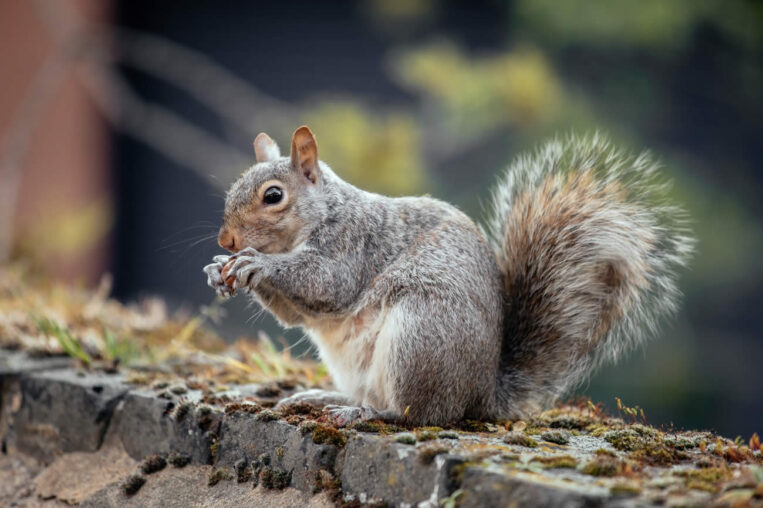If you’ve ever had a squirrel in your chimney, you know it’s not just a noisy problem—it’s a stressful one. Squirrels are clever, agile, and determined. Once they get into your chimney, they can be tough to remove. But don’t worry. In this guide, I’ll walk you through everything you need to know about how to catch a squirrel in your chimney safely and effectively.
Why Do Squirrels Get Stuck in Chimneys?
Squirrels don’t just end up in your chimney by accident. They’re often looking for a safe, sheltered place to build a nest. Chimneys provide that shelter, especially if they’re not covered by a cap or screen.
- Shelter: Chimneys are dark, enclosed, and out of the wind—just what a squirrel needs for a nest.
- Safety: Away from predators, a chimney can seem like a perfect hiding place.
- Warmth: During colder months, a chimney offers a warmer spot, especially if it’s connected to a house.
But once they’re in, they can have trouble getting out, especially if the walls are smooth. That’s when they get stuck, and that’s when you have a problem.
How Can You Tell If a Squirrel Is in Your Chimney?
Before you try to catch a squirrel, you need to make sure that’s what you’re dealing with. Here’s how you can tell:
- Scratching Sounds: If you hear frantic scratching, tapping, or rustling, it’s a clear sign. Squirrels will try to climb out, and that sound is them scrambling against the walls.
- Chirping or Squeaking: Squirrels are vocal, especially when they’re distressed. Listen for any high-pitched squeaks.
- Visible Movement: If you look up your chimney (carefully) or open the damper, you might see the squirrel.
If you’re sure it’s a squirrel, it’s time to act. But you need to do this safely.
Is It Dangerous to Have a Squirrel in Your Chimney?
Yes, it can be. A trapped squirrel is a desperate squirrel. It can cause damage as it tries to escape. Here’s why it’s a problem:
- Fire Risk: If your chimney is in use, a trapped animal can block airflow, creating a fire hazard.
- Damage: Squirrels can scratch and chew on chimney liners, dampers, and other parts, causing costly damage.
- Health Concerns: Squirrels can carry parasites or diseases, which could become a problem if they enter your home.
This means you shouldn’t just leave the squirrel there or hope it leaves on its own. You need to take action.
Preparing to Catch the Squirrel: What You Need
Before you try to catch the squirrel, gather a few essential tools:
- Thick Gloves: Squirrels can bite and scratch. Protect your hands.
- A Towel or Blanket: This can be used to safely catch the squirrel.
- A Large Box or Container: You’ll need something to hold the squirrel once you’ve caught it.
- A Sturdy Ladder: If you need to access the top of the chimney.
- A Flashlight: To help you see the squirrel.
- Wire Mesh or Chimney Cap: To prevent future problems.
Make sure your fireplace is completely cold. If there’s any chance the fire is still burning, wait until it’s safe.
How to Safely Catch a Squirrel in Your Chimney
Now that you’re prepared, it’s time to safely catch the squirrel. Here’s a step-by-step process:
1. Confirm the Squirrel’s Location
- Look inside the chimney or use a flashlight to see where the squirrel is.
- If it’s near the top, you might be able to coax it out from the outside.
- If it’s near the bottom, you’ll be able to use a humane trap or guide it out.
2. Create an Escape Path
- If the squirrel is near the top, try placing a thick rope down the chimney. Make sure it’s securely tied at the top.
- The squirrel may use this to climb out on its own.
3. Use a Humane Trap (If Needed)
- If the squirrel can’t climb out, a humane trap is your best option.
- Place the trap in the fireplace or chimney base and carefully open the damper.
- Make sure the room is sealed off so the squirrel can’t run into your house.
4. Coax It Out Carefully
- If you don’t have a trap, you can try to gently guide the squirrel out using a towel or blanket.
- Move slowly and calmly. Sudden movements can scare the squirrel.
5. Release the Squirrel Safely
- Once you have the squirrel in the trap or wrapped in a towel, take it outside.
- Release it well away from your home, preferably near a wooded area.
What If the Squirrel Won’t Come Out?
If the squirrel is stuck or refuses to move, don’t try to force it. In these cases, you may need professional help. Contact a local wildlife rescue service or pest control specialist. They have the experience to remove the squirrel without harming it.
How to Prevent Squirrels from Getting into Your Chimney Again
Once you’ve removed the squirrel, you need to make sure it doesn’t happen again. Here’s what you can do:
- Install a Chimney Cap: This is the most effective way to keep squirrels out.
- Use a Wire Mesh Cover: Make sure the mesh is fine enough that squirrels can’t squeeze through.
- Regularly Inspect Your Chimney: Check for any damage or gaps that squirrels could exploit.
- Trim Overhanging Trees: If a tree is too close to your chimney, squirrels can easily jump across.
What Should You Avoid Doing?
There are a few mistakes you should avoid when trying to catch a squirrel in your chimney:
- Don’t Use Poison: It’s dangerous, inhumane, and can leave you with a dead squirrel stuck in your chimney.
- Don’t Light a Fire: This can kill the squirrel, which is both cruel and could cause a dangerous blockage.
- Don’t Block the Chimney Opening: This can trap the squirrel with no way out.
When to Call a Professional
If you’ve tried everything and the squirrel is still stuck, it’s time to get help. Wildlife removal experts have the right tools and experience to handle the situation safely. Don’t hesitate to call if:
- The squirrel is aggressive or panicking.
- You can’t reach the squirrel without risking injury.
- You’re unsure how to handle the situation.
Final Thoughts
Catching a squirrel in your chimney can be a bit of a challenge, but it’s something you can handle with a bit of patience and the right approach. Always remember to stay calm, keep your own safety in mind, and do what’s best for the squirrel.
Once you’ve successfully removed it, don’t forget to secure your chimney to prevent it from happening again. With a chimney cap and regular checks, you can avoid any future squirrel invasions.
If you ever find yourself dealing with another tricky animal situation, remember there’s always a solution—one that’s safe for both you and the animal.





